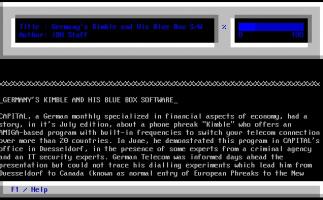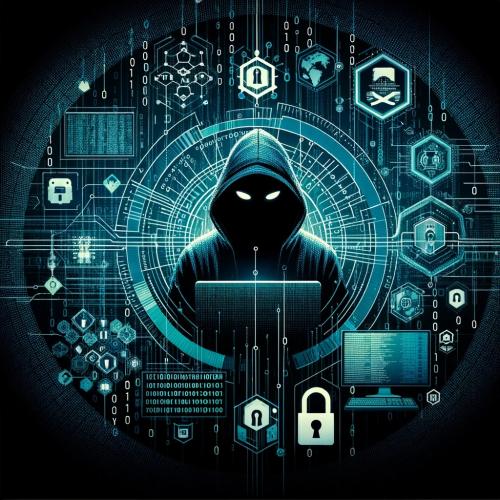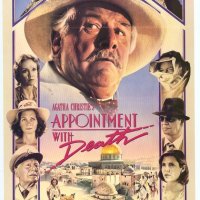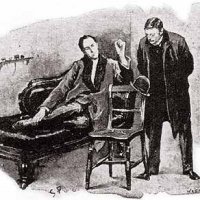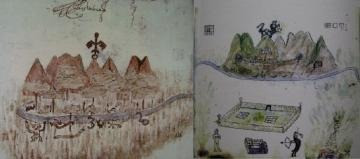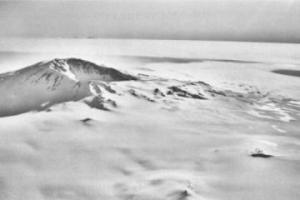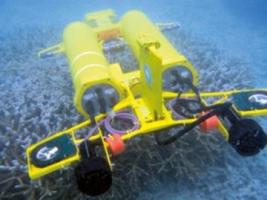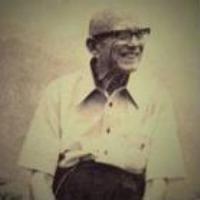Copy Link
Add to Bookmark
Report
Death of the Blue Box

DEATH OF THE BLUE BOX
COPYRIGHT (C) 1991 BY FULL DISCLOSURE. ALL RIGHTS RESERVED.
This article will provide an historical review of the problem of ``Blue Box''
telecommunications fraud. A blue box being the street name of one, of several
electronic devices designed to allow the user to place free, long distance
telephone calls. The information presented here consists of excerpts from the
1970's National Wiretap Commission Hearings. In some cases, answers that had
clarifying questions interspersed have been merged together without the
extraneous questions for clarity and space reasons.
The excerpts from the following witnesses are used here: Neil Beller,
Division Attorney, Central Telephone Company of Nevada; Michael Simon,
Special Agent, Federal Bureau of Investigation, Las Vegas; and Karl
Berolzheimer, Central Telephone Utilities and Utilities Corporation Counsel;
William Caming, Attorney, American Telephone and Telegraph. Other individuals
are members of the Commission.
Mr. Feldman: Mr. Beller, would you tell us how many investigations you were
involved in and the approximate period of time?
Mr. Beller: From April 22, 1973, to October 15 of 1973, we gave approximately
32 numbers to the FBI.
Mr. Feldman: . . . What does that indicate?
Mr. Beller: We had reason to believe individuals were using some sort of
device on their telephones.
Mr. Feldman: Would you state on what basis you had that belief?
Mr. Beller: We have a computer print out, a copy of which I have here, which
was for selected numbers. These are toll-free network numbers, and studying
these numbers and ascertaining where the called number was, we had reason to
believe that the person was using a foreign device.
The reason for that is that some of the numbers that were called were
numbers, for example, to New York information, or the information office at
TWA. And it is not logical for a person to talk to TWA for 20 minutes or a
half-hour.
Based upon that, we would put either a brush recorder or at a later date we
subsequently acquired another device, which emitted a tape such as this. And
from that we were able to ascertain that the person was, in fact, using a
foreign device on the telephone line.
Mr. Feldman: Agent Simon, how many cases ultimately resulted from the
information provided you?
Mr. Simon: The resulting investigative cases? We had five cases that were
brought to indictment and subsequent prosecution. We had seven other cases
that, because of the United States Attorney's position, prosecution was
declined. And I will give you one specific example, where an individual made
a blue box which was very unsophisticated in comparison to what Mr. Caming
showed us. This box was approximately two-and-a-half feet long by two feet
wide and about 18 inches tall.
This man made it at home from various electronic parts, and his wife used the
device to call her mother once a week in Miami, Florida.
You have to understand, of course, that we did conduct extensive
investigation to obtain all the facts we could before we presented them to
the United States Attorney.
There were other telephone numbers referred to us by Mr. Beller where we
subsequently obtained affidavits in support of a search warrant and
subsequent search warrant were executed and we had what is known as a ``dry
hole.'' The device was not there.
As we progressed with these investigations we became more sophisticated. We
learn with each one.
Mr. Feldman: If we could concentrate on the successful investigations, I
believe that information came to you as to the FBI from a number of different
sources, indicating that various defendants we using electronic toll fraud
devices. I wonder if I you can state the different ways in which this
information came to your attention.
Mr. Simon: There were three different ways. Mr. Beller would furnish us with
a computer tape printout, and after the issuance of a federal grand jury
subpoena directed to Mr. Beller or his designee, he would furnish us with the
name and address of the individual.
We would then conduct a physical surveillance to determine if that person
actually existed. It is always possible to have aliases. We did run into a
number of instances where an individual who was subscribing to the telephone
company service was not, in fact, the name that was on that card.
So once we established this, and after obtaining a search warrant, we would
notify Mr. Beller.
Mr Beller, in turn, would notify one of the technicians who would tell us
that were was, in fact, a device being utilized on that telephone.
Mr. Simon: The second thing we had was confidential sources of information.
[these were FBI informants who would provide information that electronic toll
fraud was occurring just the same as they'd advise of a gambling offense].
And Mr. Moore was first brought to our attention by a confidential source who
furnished the information to an agent of the FBI, Mr. J. Lawrence Sullivan.
Mr. Moore did not have any of these devices even though he was selling them
in Las Vegas. We were able to pick up Michael Raymond Tullis who was
subsequently tried and convicted for fraud by wire based on the confidential
source information.
Mr. Feldman: So you have computer printout information and informant
information. Was there any other?
Mr. Simon: Yes. On Frank Joseph Masterana -- he had been the subject of a
number of legal Title III wire interceptions by not only the Law Vegas
Division, but other Divisions of the FBI. He was at one time in Macon,
Georgia, for sentencing on one of the gambling cases, at which time
confidential source information was received that he was using in Macon,
Georgia, at that time, a blue box to call Las Vegas.
So bearing in mind and having additional information, two of our Las Vegas
FBI agents, in August of '73, observed Masterana in an open pay telephone
booth making a telephone call with what appeared to be a blue box. But they
couldn't get close enough because he was quite surveillance conscious.
Based up on that and subsequent investigations, we were able to assume that
he was using a blue box, but we couldn't put it all together factually.
In conjunction with advice furnished by Strike Force Attorney James Buff, who
is assigned to the Las Vegas & California, Strike Force Office, we together
with the telephone company, worked out a program whereby if we were able to
come up with the various telephones that Masterana was using to make these
alleged calls, Mr. Duff would give us authority to make an immediate arrest,
providing the telephone company could verify the fact that Masterana was
using an electronic device or a blue box.
Mr. Simon: These were pay telephone booths. What was required was to send
agents out in the field and survey Masterana on a continuous basis to find
out what telephone exchanges he was using.
After several days' work we were able to determine he was using three or four
different exchanges. He was very careful. He would use an open pay phone in a
drug store, for example, that was inside of the drug store, where he could
view the exterior entrances into the drug store, watching for agents. And
because of the size of the city of Las Vegas, it didn't take him very long to
find out who we were. So it was difficult to surveil him.
[Description of methods by phone company to verify use of toll fraud devices
ommitted]
Mr. Feldman: Mr. Beller, once you had verified to your own satisfaction,
using the electronic equipment, that, in fact, electronic toll fraud was
committed on the lines, what did you do?
Mr. Beller: Concurrent with the subpoena from the FBI, we'd typically put on
the recorder that particular individual's line. At that point in time, Mr.
Simon would hand carry over a subpoena for any and all information that we
would have relating to toll fraud. He would ask for the subscriber
information card which denotes the name of the particular person who has the
line, any other information that we might have, which would then be the paper
tape.
Mr Feldman: Agent Simon, I wonder if you could indicate what your next step
was once you had received the information Mr. Beller has described.
Mr. Simon: Once we received the information, again our investigative process
was to verify the fact and physically observe the home or apartment to see
that we had everything correct and based upon that information, I would take
the information furnished by Mr. Beller on the 800 number, the toll free
number, and I would call it that day or the next day to verify the fact that
it was a toll free number to a particular place. In some instances that
number was no longer actually working, but the person utilizing the blue box
would get into the toll free telephone line system and use that number to get
into it.
Then I would take that information and prepare an affidavit in support of a
search warrant. This affidavit was then brought before the U.S. Magistrate
who reviewed it, and through the normal process a search warrant was issued.
Then I would return to my office and contact Mr. Beller and tell him we had a
search warrant at that time.
The next step was that whomever Mr. Beller would designate -- one of their
electronic experts -- would call me and say they had information that this
particular time an electronic device was being used on this telephone.
Mr. Feldman: Was that information gathered by continued use of the TTS-176
(pen register)?
Mr. Beller: Yes.
Mr. Simon: This may have taken two days to prepare. Then there would be
agents in the field and I'd notify them by radio. They had the search
warrant, plus inventories in their possession, and they'd go in the house
with a lawful search warrant and execute it.
Mr. Feldman: And this was the same general procedure used in each of the
cases?
Mr. Simon: With the exception of the Masterana case. In the Masterana case
the Central Telephone Company was able to put on the device after we had
surveyed the phone he had used. If we could tell what exchange Masterana was
using, the telephone company would put on their TTS-176 and be able within
ten minutes to tell us whether he was using an electronic device, the
possession of which was not in violation of the law so he had to be using it.
And as a result, we arrested Masterana in a telephone booth specifically on
October 15, 1973, in a public pay telephone booth, at which time he had two
blue boxes in his possession, the one he was using, together with voluminous
gambling records, and $18,836.53 was confiscated.
Mr. Feldman: In the other four cases, when you executed the search warrant,
who did you find in the premises and did you find a blue box in each house?
Mr. Simon: Yes, in each case. In the Judith Dinah Douglas case, two blue
boxes were found when the search warrant was executed. As a result of this,
she, Douglas, was tried by stipulation of facts and found guilty. She was
sentenced to serve five years in custody of the Attorney General of the
United States on July 2, 1974, provided she'd submit to psychiatric
examination, and come back within 90 days for resentencing.
Subsequently, her case was appealed to the Ninth Circuit on two separate
occasions. The Ninth Circuit upheld the conviction. She has not to my
knowledge begun serving her sentence, nor is she though with her legal
recourse. Apparently she is going to appeal again.
On the Michael Raymond Tullis case, upon execution of the search warrants
based upon confidential source information, we did find one device in his
apartment, and this case when to jury trial.
He subsequently appeared on March 15, 1974, with counsel in Las Vegas and was
sentenced to five years in the custody of the Attorney General, with the
first 90 days to be served in custody, and the balance of the sentence was
suspended and he was placed on probation for the additional period.
In the Frank Victor Scaramuzzo case, with a valid search warrant we recovered
a blue box and went to trial. He was found guilty on March 28, 1974, by the
jury. On May 10, 1974, the United States District Judge in Las Vegas
suspended the sentence and placed him on three years' probation.
At this time, he also ordered that Moore make restitution to the Central
Telephone Company.
He filed a notice of appeal to the Ninth Circuit and the Ninth Circuit upheld
the conviction.
The last matter was David Louis Goldberg and H. Jordan Rabstein. In this
particular matter, in the fall of 1973, we had a court authorized wire
interception on Mr. Goldberg's residence phones. During that period of time,
while we were monitoring and recording, we found on a repetitive basis that
Rabstein would attempt to use the blue box or the electronic device to
circumvent the telephone toll call recording equipment. It was a
sophisticated type of blue box, slightly larger than the one Mr. Caming
presented.
We heard him on numerous occasions make mistakes and because of the slowness
with which he had to manipulate the call numbers, it apparently would not
work successfully. Once in a while he'd complete a call and be completely
elated. Mr. Goldberg, on the other hand, was much more efficient.
Subsequently, Mr. Beller came to us with computer tape printouts, and we went
through our normal process of obtaining an affidavit in support of a search
warrant and subsequently a search warrant and executing the same, at which
time we found the blue box in his residence, next to his night stand, which
he had access to -- his wife would, too, but he was the one who normally used
it. Also also we were able to seize three illegal, unregistered firearms that
he had in the apartment.
Mr. Goldberg, subsequently, together with Mr. Rabstein and with counsel, were
charged with violation of the Title 18 Sections 1084 and 1343 of the United
States Code. And they appeared and entered a plea of guilty.
They were subsequently sentenced on August 18, 1974, at which time Goldberg
was sentenced to one year in custody of the Attorney General of the United
States for violation of Section 1343, and Goldberg was placed on one year
probation for violation of Title 18, Section 1084, both sentences to run
consecutively.
Mr. Feldman: Agent Simon, you have already indicated that Section 1343 does
not specifically prohibit the possession of blue boxes.
Mr. Simon: To my knowledge, the manufacture or possession.
Mr. Feldman: And in all cases, expect the Masterana case, I assume, you
arrived there sometime after the call had been concluded?
Mr. Simon: It was circumstantial.
Mr Feldman: That is my point. The evidence on which convictions were
subsequently obtained was circumstantial.
Mr. Simon: That is right.
Mr. Feldman: I wonder if you can describe the type of circumstantial evidence
that was used in these cases?
Mr. Simon: We had the computer print out and the TTS-176 tapes -- not only
that was previously given to us but that day, of the time, the Central
Telephone Company had the TTS-176 installed on that phone or particular
phones. That became part of the evidence we presented. Plus the fact that
these people were the only ones in the apartment when the search warrant was
executed helped us, of course.
In one instance, in the Scaramuzzo case, he called his attorney in the
presence of Special Agent John Kinsinger -- and I am going to paraphrase what
Scaramuzzo said. He said, ``They caught me with one of them things,'' or
``They caught me with one of them boxes and I was using it.''
What he was saying is he had just set it down when the agents entered the
room. And he set it down to answer the door and the phone was off the hook.
We were able to introduce this and it was very strong
Mr Feldman: And that was the basis on which convictions were obtained?
Mr. Simon: That is correct.
Mr. Berolzheimer: I want to make clear that Central Telephone Company,
although it operates in nine states, has only had experience with this
problem is Las Vegas. We only have experience in one area. You will notice
from the material we have submitted to the Commission it all occurred during
a relatively short period of time in 1973. It deals with one community, Las
Vegas, which has relatively compact and flat geography with wide streets and
low buildings.
It also happens to be the center of legalized gambling which also attracts a
certain amount of illegal gambling and transmission of gambling information.
So we have in Las Vegas a combination of unique circumstances, in including
its geography, its size, the interest of both the FBI and the prosecuting
agency; I think also the existence of a grand jury and the ability of the FBI
to obtain search warrants.
We also had cooperation between the telephone company and the FBI, as has
been described by the witnesses, with surveillance and radio control, so that
they could swoop in and get the blue box.
I don't know, because we don't have the experience, but I certainly can
conceive it would be most difficult to obtain that kind of evidence in a
major metropolitan area. I just don't think you could coordinate it that
well. Your ease of movement wouldn't be the same. Your distances would be
greater; you'd have different kinds of courts.
And I'm not convinced, although we were successful -- that is the United
States Attorney was successful -- in securing convictions in these six cases,
without positive identification of the user, I don't know that the evidence
would be convincing in every court. It had not become a critical issue in the
cases tried in Las Vegas, but I can conceive of a court taking the position
that without voice identification of the user a conviction could not be
obtained.
Mr. Westin: . . . Do you believe these techniques would not be feasible in a
large metropolitan center or under conditions that vary from the Las Vegas
one?
Mr. Simon: I think all of the comments were very valid. Because of the fact
that I spent ten years in Chicago, I can only express an opinion, but I can't
conceive of this working in an apartment complex, a high rise, third floor
walk up. I think it would be almost impossible. If the technology was
available we might be able to proceed, but I do not think we could enter the
residence within from one to five minutes after the telephone company says
``The electronic device is being used right know by an unknown party in
Apartment no. so and so.''
I think it would be almost impossible to have the physical surveillance work
because of the largeness of the metropolitan area. I think it would be almost
impossible to surmount. I just don't know how it could be done.
Mr Hodson: . . . does Bell also use the system we have just heard about?
Mr. Caming: First, I might like to say, Mr. Hudson, I am in general agreement
with everything said by Mr. Simon and the gentlemen from Central Telephone.
In fact, we agree completely. And we have found in a number of cases where
we, too, have been fortunate because of proximity and circumstances in the
thousand or so cases we have been involved in in the last decade, if we could
catch them using it or in circumstances very close to that, as Mr. Simon so
ably described in one or two of the cases, then we either would obtain a plea
of guilty or they would be found guilty.
But we have found in the majority of our cases, and those that are the
greatest problem to the industry as a whole, that we have not been able to
have such a happy admixture of factual circumstances. And let me give you
three cases just as an example of what we have been through.
Problems of identification have been very great. We had one recently that we
received invaluable help from law enforcement authorities on. And I might
generally say that over the years, in many areas, not not only electronic
fraud, the cooperation of the Bureau has been consistently outstanding. And I
think it is worthy to express what is a personal feeling but a tribute to
their industry and dedication. As far as one case, it is a case that might be
denominated -- the Bremson Case -- only because he was one of the original
architects. Since time is of the essence, I will quickly synopsis it. It
involved the general cooperation of 14 Bell Telephone companies and two
General Telephone companies between December 1971 and September 1972.
I will just name the cities that were principal cities: Minneapolis,
Cleveland, Houston, Dallas, Los Angeles, Santa Monica, Atlanta, Washington,
DC, Chicago, Detroit, Des Monies, Memphis, St Paul, Miami, New York, Denver,
Knoxville, New Orleans, Milwaukee -- among others.
We finally resulted in gathering evidence -- as you can see, this was a very
widespread conspiracy of manufacturers, nationwide distributors, and users
such as businessmen. The purpose was to not only very substantially
manufacture and distribute blue boxes, but to use them in an extensive number
of businesses where you might have offices populated by a large number of
people, and where it was virtually impossible to maintain surveillance of any
intimate character.
Also, these people used them at homes scattered throughout a large area.
It finally resulted in 20 arrests, 19 indictments, at least 14 convictions --
a number of investigations are still going on.
In another case, to show you how cogent the problem is, financier Bernard
Kornfeld was involved. He apparently had a home with I understand was huge,
something like 90-odd rooms, in the California area. There was a large number
of people, both male and female, constantly in and out of there. There were
indications from various sources of some use by somebody of blue boxes in
some parts of this rather cavernous place.
Finally, it resulted in apprehension by chance of one of the secretaries
using the blue box, and she was arrested on January 28 of 1975. The question
of identification could not have been made except for the very limited voice
recording.
It ultimately resulted in the seizure of two boxes. And even with all that,
it took six months more to develop the case, to indict Mr. Kornfled on June
5, 1975, by a federal grand jury in Los Angeles, some six months later, for
making 344 calls to Europe over a period of time.
The witnesses at offered a solution to the problem. The following is the
statute they proposed:
``Fraudulent Communication Devices.<R> ``(a) Whoever willfully<R> ``(1) sends
through the mail, or sends or carries in interstate or foreign commerce,
or<R> ``(2) imports or otherwise brings into the United States or any
territory or possession under its control or jurisdiction, or<R> ``(3) makes,
assembles or possesses, or<R> ``(4) sells, gives or otherwise transfers to
another, or<R> ``(5) offers, or places in any newspaper, magazine, handbill
or other publication any advertisement, to sell, give or otherwise transfer
to another, or<R> ``(6) purchases or in any other manner obtains, receives or
conceals,<R> ``any electronic, mechanical or other device, instrument,
apparatus or equipment or plans, specifications, instructions or other
information for making, assembling or using any such device, instrument,
apparatus or other equipment, or publishing any such plans, specifications,
instructions or other information,<R> ``with intent to use it, or knowing or
having reason to know that it is intended to be used or that its design
renders it primarily useful, to obtain any communication service from a
communication common carrier,<R> ``by rearranging, tampering with, or making
any unauthorized connection, whether physically, electronically,
acoustically, inductively, or otherwise to, any telephone instrument,
equipment or facility of any such communication common carrier, to avoid the
payment, in whole or in part, of the lawful charge for such communication
service, or to from any such communication common carrier or from any lawful
authority the existence or place of origin or termination of any
communication,<R> ``or by using any communication service knowing or having
reason to know that such rearrangement, tampering or connection existed at
the time of use,<R> ``shall be fined not more than $1,000 or imprisoned not
more than five years or both.
The first amendment aspects of this statute were brought up, but due to a
lack of time were not addressed in any detail. The whole problem of this type
of fraud and statutes to deal with it became moot when industry step in and
plugged the technological holes. In a February 1990 article in SECURITY
MANAGEMENT in discussing the problem, aptly noted that ``[i]t took a series
of innovative technological developments by the Bell System to defeat them.''
Today, the attempts to solve the unauthorized access of computers and current
day telecommunication fraud parallel the blue box situation. They will be
equally ineffective.
Even a statutory change to reduce the burden on law enforcement agencies
would have still necessitated an on going investigation, prosecution and
incarceration program sufficient to deal with many thousands of individuals
using toll fraud devices. Nonetheless, there still exists today a periodical
based in blue box technology and mentality. It is called 2600.
The above is reprinted from Full Disclosure Newspaper. Subscribe today and
get interesting articles like the above, plus more... pictures, graphics,
advertisement, and more articles. Full Disclosure is your source for
information on the leading edge of surveillance technology. Print the
following form, or supply the information on a plain piece of paper:
----
Please start my subscription to Full Disclosure for:
[ ] Sample issue, $2.00
[ ] 12 issue subscription, $18.00
[ ] 24 issue subscription, $29.95
With 24 issue susbcription include free one of the following:
[ ] Directory of Electronic Surveillance Equipment Suppliers
[ ] Citizen's Guide on How to Use the Freedom of Info/Privacy Acts
[ ] Maximizing PC Performance
Also available separately:
[ ] Directory of Electronic Surveillance Equipment Suppliers, $6.00
[ ] Citizen's Guide on How to Use the Freedom of Info/Privacy Acts, $5.00
[ ] Maximizing PC Performance, $6.00
Illinois residences, add 6.5% sales tax on above 3 items.
Enclosed is payment in the form of:
[ ] Check/Money order, [ ] Visa, [ ] Mastercard
Card no:___________________________________ Exp date:_______
Signature:__________________________________________________
Phone:______________________________________________________
(required for credit card orders)
My name/address:
Name:_______________________________________________________
Street:_____________________________________________________
City/State/Zip:_____________________________________________
Return to: Full Disclosure, Box 903, Libertyville, Illinois 60048








